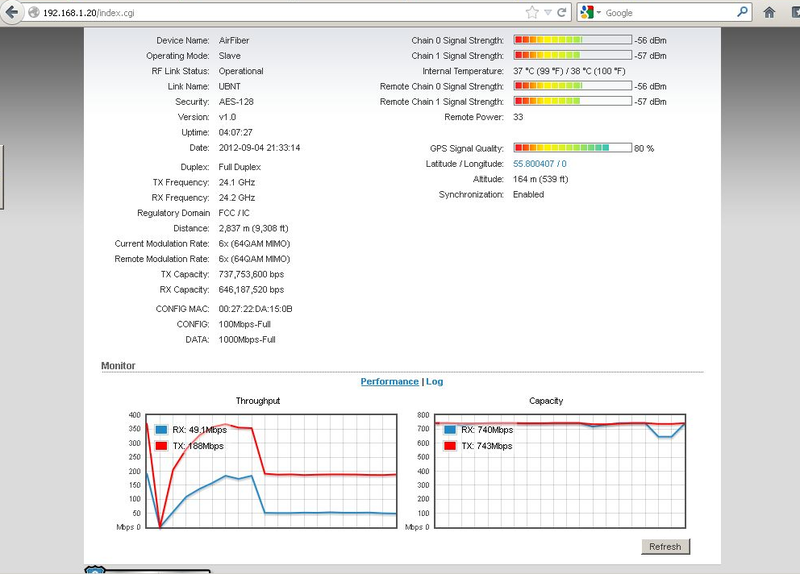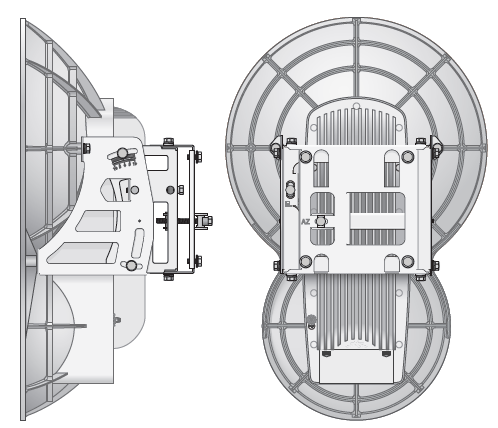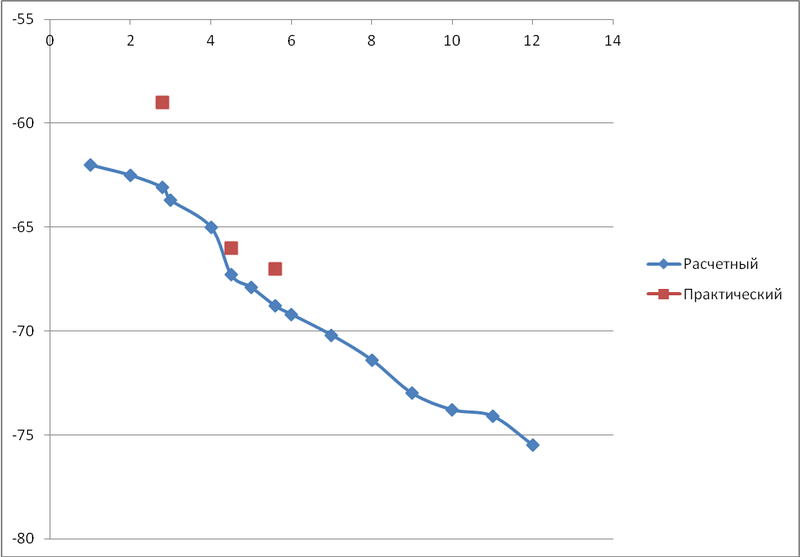AirFiber is the new revolution from Ubiquiti. Test results
Colleagues!
At your many requests, we tested the first Ubiquiti AirFiber span brought to Russia. On the official website, the manufacturer claims that AirFiber is capable of transmitting up to 1400 Mbit / s over a distance of more than 13 km. This is many times higher than the capabilities of modern RRL (1 + 0) and of course, we waited with great impatience for AirFiber. And so, the first batch arrived, and we immediately conducted tests at real distances.

Company Ubiquiti , and its products are unlikely to need to present to our readers.
For 5 years, Ubiquiti has been offering us reliable, high-performance and low-cost solutions for the last mile Airmax and Wi-Fi solutions for home and office.
Ubiquiti's highly directional Nanobridge and Powerbridge antennas are also often used as low-cost trunk radio channels.
However, every year the requirements for the capacity of the main channels are growing every year, and the capacity of 100-150 Mbit simplex is often not enough even for a demanding customer, not to mention the main channels.
The massive use of torrent clients also places high demands on the packet performance of the radio channel.
Today Ubiquiti offers a new solution for building high-performance highways, combining base stations, connecting segments of cable networks.
AirFiber is a convenient, high-performance and compact solution for the operator's core network.
The AirFiber radio relay station allows you to get a reliable 750 Mb full duplex radio channel out of the box for any type of traffic at an unprecedented low cost.
Despite the low cost, AirFiber possesses all the features inherent in modern radio relay stations:
• High channel throughput
• High packet performance, no drop in speed with a small packet size
• Use of high-performance modulations and XPIC MIMO technology to increase channel capacity and efficient use of the radio environment

• Adaptive modulation, allowing to obtain the optimal channel in terms of capacity and reliability.
• Low power consumption (up to 50 watts)
The package includes everything you need to deploy the channel:
• The device itself with built-in antennas
• A complete set of fasteners
• Power injector for twisted pair
• Instructions for the
AirFiber system are equipped with a Gigabit Ethernet interface for transmitting traffic and inband control, as well as an additional interface for out of band control via a backup communication channel.
Another interface, AUX, allows you to connect a voltmeter through a simple adapter and perform adjustment according to its readings (in fact, it is an analog of the built-in RSSI indicator). The

device is adjusted using the web menu or the built-in indicator of the received RSSI signal level.
When you turn on the device, we see the familiar Ubiquiti interface:

The device menu is in the process of adjustment.
Functionally, the trunk operates in the transparent bridge mode, with the ability to manage the device in a dedicated management vlan.
Test operation of the system was carried out by us at distances of 2.8, 4.5, 5.6 km.
The distances were chosen to obtain maximum system performance.
Before testing, the energy of the radio channel was calculated to determine the expected signal level and attainable speed.
The system was installed on roofs, on a standard pipe rack.
The fasteners and the adjustment of the system are very convenient, in the attached video you can see that the system is adjusted by rotating only 2 screws.

Appearance of the device.

The calculation of radio - a simple and convenient scheduling a radio

device on trubostoyke
Test results
When testing on a 4.5 km channel, the load consisted of traffic on the home network and IPTV (tests were carried out on the provider's live network, they connected a group of high-rise buildings).
The remaining channels were tested using the Fluke Etherscope hardware traffic generator.
• The power system is fully consistent with the declared, it is even possible to align it 4 dB better than calculated.
• Due to some features of revision 1.0 software, we reduced the output power by 3 dBm
| | Estimated Values | Values obtained | ||
| Signal strength (excluding power reduction) | Full duplex channel capacity | Signal (subject to power reduction) | Full duplex channel capacity | |
| 2,8 km | -63 | 743 Mbps | -59 | 743 Mbps |
| 4.5 km | -67.3 | 500 Mbps | -66 | 500 Mbps |
| 5.6 km | -68.8 | 500 Mbps | -67 | 500 Mbps |

Estimated and

practically achieved signal level dBm Estimated and practically achieved radio channel speed Mbps

Effective (useful) fullduplex speeds of typical point-to-point solutions, depending on range

Somewhere there, behind the forest, almost 6 kilometers away, there will now be fast Internet
Conclusion
The system fully confirmed the declared characteristics.
The signal levels obtained during practical tests exceed the calculated ones, the system performance corresponds to the declared one.
Unlike Wi-Fi solutions, the system transmits IPTV traffic without compromising image quality, and also does not have a packet load limit, that is, it is able to work with a large amount of torrent traffic.
Unlike many relay stations, the system does not have licensing restrictions on bandwidth and hidden fees for their removal - you purchase a system with all its capabilities at once.
In new versions of software, the manufacturer promises to please us with additional functionality, for example:
• MTU support up to 9 Kbytes, which will allow operators to transmit MPLS traffic without additional fragmentation
• Increasing the distance at which the system operates at maximum speed
• Improving the stability of links longer than 10-12 km in the rain thanks to new noise-resistant modulations.
• SNMP support for taking statistics from devices.
In the near future we plan to conduct another series of tests and test a new version of the software (it was already released at the time of publication), and the next batch of AirFiber will arrive by mid-November.
Well, now ask questions!
